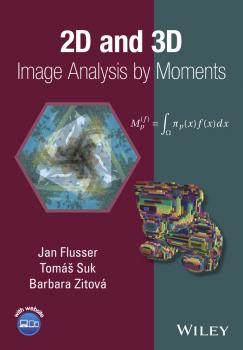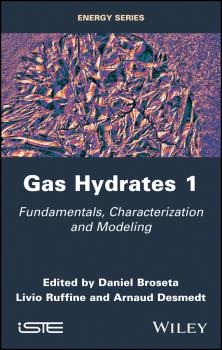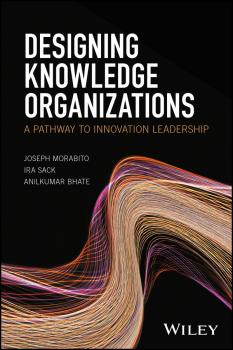ТОП просматриваемых книг сайта:
Техническая литература
Различные книги в жанре Техническая литература, доступные для чтения и скачиванияАннотация
Presents recent significant and rapid development in the field of 2D and 3D image analysis 2D and 3D Image Analysis by Moments, is a unique compendium of moment-based image analysis which includes traditional methods and also reflects the latest development of the field. The book presents a survey of 2D and 3D moment invariants with respect to similarity and affine spatial transformations and to image blurring and smoothing by various filters. The book comprehensively describes the mathematical background and theorems about the invariants but a large part is also devoted to practical usage of moments. Applications from various fields of computer vision, remote sensing, medical imaging, image retrieval, watermarking, and forensic analysis are demonstrated. Attention is also paid to efficient algorithms of moment computation. Key features: Presents a systematic overview of moment-based features used in 2D and 3D image analysis. Demonstrates invariant properties of moments with respect to various spatial and intensity transformations. Reviews and compares several orthogonal polynomials and respective moments. Describes efficient numerical algorithms for moment computation. It is a «classroom ready» textbook with a self-contained introduction to classifier design. The accompanying website contains around 300 lecture slides, Matlab codes, complete lists of the invariants, test images, and other supplementary material. 2D and 3D Image Analysis by Moments, is ideal for mathematicians, computer scientists, engineers, software developers, and Ph.D students involved in image analysis and recognition. Due to the addition of two introductory chapters on classifier design, the book may also serve as a self-contained textbook for graduate university courses on object recognition.
Аннотация
Clustering techniques are increasingly being put to use in the analysis of high-throughput biological datasets. Novel computational techniques to analyse high throughput data in the form of sequences, gene and protein expressions, pathways, and images are becoming vital for understanding diseases and future drug discovery. This book details the complete pathway of cluster analysis, from the basics of molecular biology to the generation of biological knowledge. The book also presents the latest clustering methods and clustering validation, thereby offering the reader a comprehensive review of clustering analysis in bioinformatics from the fundamentals through to state-of-the-art techniques and applications. Key Features: Offers a contemporary review of clustering methods and applications in the field of bioinformatics, with particular emphasis on gene expression analysis Provides an excellent introduction to molecular biology with computer scientists and information engineering researchers in mind, laying out the basic biological knowledge behind the application of clustering analysis techniques in bioinformatics Explains the structure and properties of many types of high-throughput datasets commonly found in biological studies Discusses how clustering methods and their possible successors would be used to enhance the pace of biological discoveries in the future Includes a companion website hosting a selected collection of codes and links to publicly available datasets
Аннотация
Gas hydrates, or clathrate hydrates, are crystalline solids resembling ice, in which small (guest) molecules, typically gases, are trapped inside cavities formed by hydrogen-bonded water (host) molecules. They form and remain stable under low temperatures – often well below ambient conditions – and high pressures ranging from a few bar to hundreds of bar, depending on the guest molecule. Their presence is ubiquitous on Earth, in deep-marine sediments and in permafrost regions, as well as in outer space, on planets or comets. In addition to water, they can be synthesized with organic species as host molecules, resulting in milder stability conditions: these are referred to as semi-clathrate hydrates. Clathrate and semi-clathrate hydrates are being considered for applications as diverse as gas storage and separation, cold storage and transport and water treatment. This book is the first of two edited volumes, with chapters on the experimental and modeling tools used for characterizing and predicting the unique molecular, thermodynamic and kinetic properties of gas hydrates (Volume 1) and on gas hydrates in their natural environment and for potential industrial applications (Volume 2).
Аннотация
A comprehensive guide that addresses the theory and practice of spatial audio This book provides readers with the principles and best practices in spatial audio signal processing. It describes how sound fields and their perceptual attributes are captured and analyzed within the time-frequency domain, how essential representation parameters are coded, and how such signals are efficiently reproduced for practical applications. The book is split into four parts starting with an overview of the fundamentals. It then goes on to explain the reproduction of spatial sound before offering an examination of signal-dependent spatial filtering. The book finishes with coverage of both current and future applications and the direction that spatial audio research is heading in. Parametric Time-frequency Domain Spatial Audio focuses on applications in entertainment audio, including music, home cinema, and gaming—covering the capturing and reproduction of spatial sound as well as its generation, transduction, representation, transmission, and perception. This book will teach readers the tools needed for such processing, and provides an overview to existing research. It also shows recent up-to-date projects and commercial applications built on top of the systems. Provides an in-depth presentation of the principles, past developments, state-of-the-art methods, and future research directions of spatial audio technologies Includes contributions from leading researchers in the field Offers MATLAB codes with selected chapters An advanced book aimed at readers who are capable of digesting mathematical expressions about digital signal processing and sound field analysis, Parametric Time-frequency Domain Spatial Audio is best suited for researchers in academia and in the audio industry.
Аннотация
Provides a unique and methodologically consistent treatment of various areas of fuzzy modeling and includes the results of mathematical fuzzy logic and linguistics This book is the result of almost thirty years of research on fuzzy modeling. It provides a unique view of both the theory and various types of applications. The book is divided into two parts. The first part contains an extensive presentation of the theory of fuzzy modeling. The second part presents selected applications in three important areas: control and decision-making, image processing, and time series analysis and forecasting. The authors address the consistent and appropriate treatment of the notions of fuzzy sets and fuzzy logic and their applications. They provide two complementary views of the methodology, which is based on fuzzy IF-THEN rules. The first, more traditional method involves fuzzy approximation and the theory of fuzzy relations. The second method is based on a combination of formal fuzzy logic and linguistics. A very important topic covered for the first time in book form is the fuzzy transform (F-transform). Applications of this theory are described in separate chapters and include image processing and time series analysis and forecasting. All of the mentioned components make this book of interest to students and researchers of fuzzy modeling as well as to practitioners in industry. Features: Provides a foundation of fuzzy modeling and proposes a thorough description of fuzzy modeling methodology Emphasizes fuzzy modeling based on results in linguistics and formal logic Includes chapters on natural language and approximate reasoning, fuzzy control and fuzzy decision-making, and image processing using the F-transform Discusses fuzzy IF-THEN rules for approximating functions, fuzzy cluster analysis, and time series forecasting Insight into Fuzzy Modeling is a reference for researchers in the fields of soft computing and fuzzy logic as well as undergraduate, master and Ph.D. students. Vilém Novák, D.Sc. is Full Professor and Director of the Institute for Research and Applications of Fuzzy Modeling, University of Ostrava, Czech Republic. Irina Perfilieva, Ph.D. is Full Professor, Senior Scientist, and Head of the Department of Theoretical Research at the Institute for Research and Applications of Fuzzy Modeling, University of Ostrava, Czech Republic. Antonín Dvorák, Ph.D. is Associate Professor, and Senior Scientist at the Institute for Research and Applications of Fuzzy Modeling, University of Ostrava, Czech Republic.
Аннотация
This book covers the recent advances in the development of bioelectronics systems and their potential application in future biomedical applications starting from system design to signal processing for physiological monitoring, to in situ biosensing. Advanced Bioelectronics Materialshas contributions from distinguished international scholars whose backgrounds mirror the multidisciplinary readership ranging from the biomedical sciences, biosensors and engineering communities with diverse backgrounds, interests and proficiency in academia and industry. The readers will benefit from the widespread coverage of the current literature, state-of-the-art overview of all facets of advanced bioelectronics materials ranging from real time monitoring, in situ diagnostics, in vivo imaging, image-guided therapeutics, biosensors, and translational biomedical devices and personalized monitoring.
Аннотация
A pedagogical approach to the principles and architecture of knowledge management in organizations This textbook is based on a graduate course taught at Stevens Institute of Technology. It focuses on the design and management of today’s complex K organizations. A K organization is any company that generates and applies knowledge. The text takes existing ideas from organizational design and knowledge management to enhance and elevate each through harmonization with concepts from other disciplines. The authors—noted experts in the field—concentrate on both micro- and macro design and their interrelationships at individual, group, work, and organizational levels. A key feature of the textbook is an incisive discussion of the cultural, practice, and social aspects of knowledge management. The text explores the processes, tools, and infrastructures by which an organization can continuously improve, maintain, and exploit all elements of its knowledge base that are most relevant to achieve its strategic goals. The book seamlessly intertwines the disciplines of organizational design and knowledge management and offers extensive discussions, illustrative examples, student exercises, and visualizations. The following major topics are addressed: Knowledge management, intellectual capital, and knowledge systems Organizational design, behavior, and architecture Organizational strategy, change, and development Leadership and innovation Organizational culture and learning Social networking, communications, and collaboration Strategic human resources; e.g., hiring K workers and performance reviews Knowledge science, thinking, and creativity Philosophy of knowledge and information Information, knowledge, social, strategy, and contract continuums Information management and intelligent systems; e.g., business intelligence, big data, and cognitive systems Designing Knowledge Organizations takes an interdisciplinary and original approach to assess and synthesize the disciplines of knowledge management and organizational design, drawing upon conceptual underpinnings and practical experiences in these and related areas.
Аннотация
Swift ion beam analysis (IBA) of materials and their surfaces has been widely applied to many fields over the last half century, constantly evolving to meet new requirements and to take advantage of developments in particle detection and data treatment. Today, emerging fields in nanosciences introduce extreme demands to analysis methods at the nanoscale. This book addresses how analysis with swift ion beams is rising to meet such needs. Aimed at early stage researchers and established researchers wishing to understand how IBA can contribute to their analytical requirements in nanosciences, the basics of the interactions of charged particles with matter, as well as the operation of the relevant equipment, are first presented. Many recent examples from nanoscience research are then explored in which the specific analytical capabilities of IBA are emphasized, together with the place of IBA alongside the wealth of other analytical methods.
Аннотация
Presents the developments in microelectronic-related fields, with comprehensive insight from a number of leading industry professionals The book presents the future developments and innovations in the developing field of microelectronics. The book’s chapters contain contributions from various authors, all of whom are leading industry professionals affiliated either with top universities, major semiconductor companies, or government laboratories, discussing the evolution of their profession. A wide range of microelectronic-related fields are examined, including solid-state electronics, material science, optoelectronics, bioelectronics, and renewable energies. The topics covered range from fundamental physical principles, materials and device technologies, and major new market opportunities. Describes the expansion of the field into hot topics such as energy (photovoltaics) and medicine (bio-nanotechnology) Provides contributions from leading industry professionals in semiconductor micro- and nano-electronics Discusses the importance of micro- and nano-electronics in today’s rapidly changing and expanding information society Future Trends in Microelectronics: Journey into the Unknown is written for industry professionals and graduate students in engineering, physics, and nanotechnology.
Аннотация
Leaders in the field predict the future of the microelectronics industry This seventh volume of Future Trends in Microelectronics summarizes and synthesizes the latest high-level scientific discussions to emerge from the Future Trends in Microelectronics international workshop, which has occurred every three years since 1995. It covers the full scope of cutting-edge topics in microelectronics, from new physical principles (quantum computing, correlated electrons), to new materials (piezoelectric nanostructures, terahertz plasmas), to emerging device technologies (embedded magnetic memories, spin lasers, and biocompatible microelectronics). An ideal book for microelectronics professionals and students alike, this volume of Future Trends in Microelectronics: Identifies the direction in which microelectronics is headed, enabling readers to move forward with research in an informed, efficient, and profitable manner Includes twenty-nine contributor chapters by international authorities from leading universities, major semiconductor companies, and government laboratories Provides a unified, cohesive exploration of various trends in microelectronics, looking to future opportunities, rather than past successes










